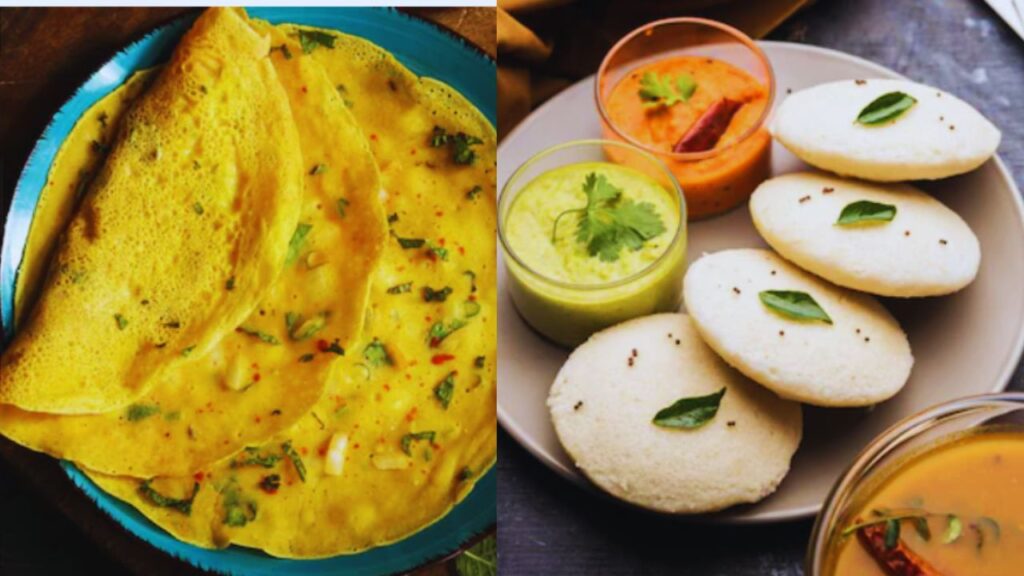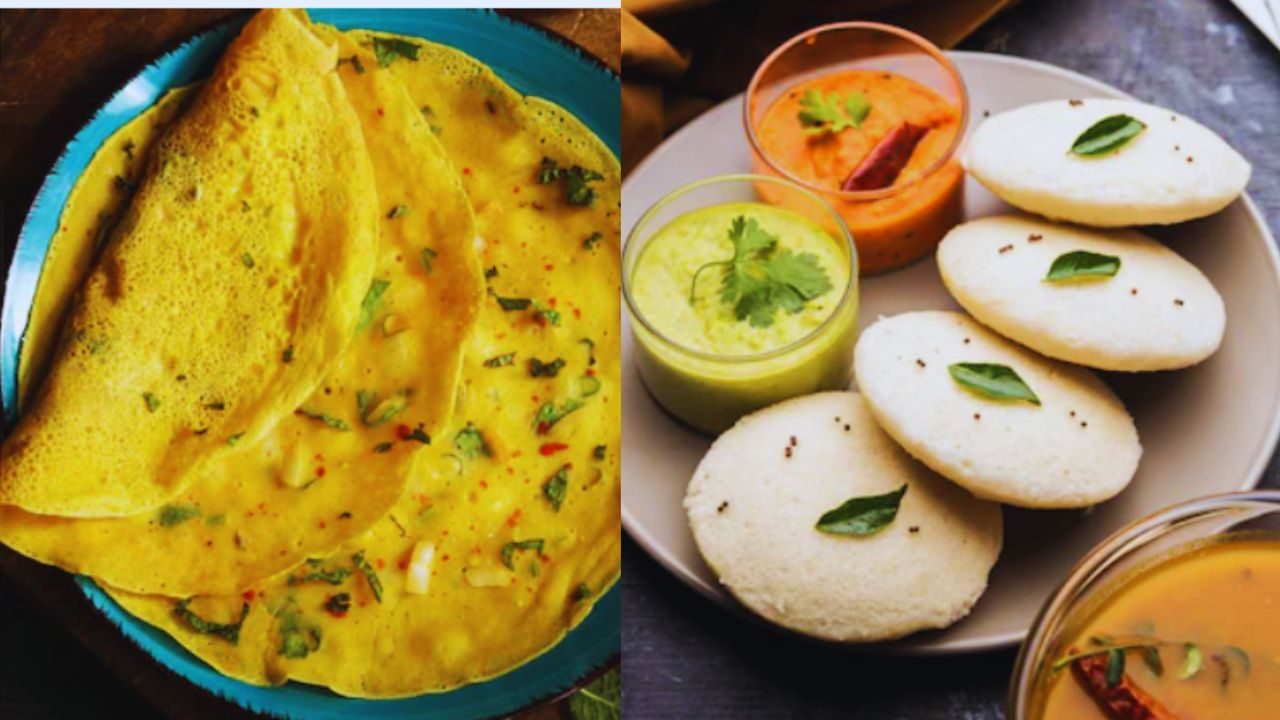As the rainy season sets in, cravings for warm, comforting food increase — but so do concerns about digestion and immunity. While idli and moong chilla are both popular Indian breakfasts, the monsoon makes us look at these options through a different lens: which one is safer, healthier, and more suitable for the damp, sensitive climate?
Let’s explore the nutritional value, digestion benefits, and safety of idli and moong chilla to determine the better monsoon breakfast.
Idli: The Steamed South Indian Classic
What is it?
A light, fluffy cake made from fermented rice and urad dal batter, steamed to perfection and typically served with chutney and sambar.
Monsoon Benefits:
- Easily Digestible: Steamed foods are ideal during the rainy season when the digestive system tends to weaken.
- Fermentation Boost: Fermented foods like idli promote healthy gut bacteria and improve digestion.
- Low Oil, High Safety: Since idlis are not fried, they carry minimal risk of contamination or oil spoilage — a key concern in humid monsoon conditions.
Things to Watch:
- Chutney Caution: Coconut chutney can spoil quickly during monsoon if not stored properly. Opt for tamarind-based or dry chutneys.
- Rice Content: Those watching their blood sugar may prefer idlis made with ragi or oats instead of white rice.
Moong Chilla: The Protein-Packed Pancake
What is it?
Savory pancakes made from soaked and ground moong dal, often combined with veggies and lightly pan-cooked.
Monsoon Benefits:
- Protein-Rich: Moong dal provides a good dose of plant-based protein, essential for maintaining immunity.
- Customizable: Adding antibacterial herbs like turmeric, ajwain, and ginger enhances monsoon suitability.
- Fiber & Fullness: Keeps you satiated longer and supports digestion when made right.
Things to Watch:
- Oil Usage: Improper oil storage during monsoon can lead to rancidity. Use fresh oil and cook lightly.
- Preparation Time: Unlike ready-to-steam idlis, chilla batter must be ground fresh or carefully stored to prevent spoilage.
Monsoon Safety Comparison
| Feature | Idli | Moong Chilla |
|---|---|---|
| Cooking Method | Steamed | Pan-cooked |
| Oil Usage | None | Minimal, but present |
| Digestion Friendly | Yes | Moderate to high (depends on oil) |
| Spoilage Risk | Low (when fresh) | Medium (if stored batter/oil) |
| Immune-Boosting Add-ons | Sambar with veggies/spices | Chilla with ginger, ajwain, turmeric |
Idli Wins the Monsoon Breakfast Battle

While both dishes are nutritious and popular, idli emerges as the safer and more monsoon-friendly breakfast choice. Its steamed nature, low oil content, and ease of digestion make it ideal for damp and infection-prone weather. You can boost its health quotient by pairing it with vegetable-rich sambar and avoiding perishable chutneys.
That said, moong chilla is still a great choice if cooked fresh and with care. It provides more protein and can be made monsoon-safe with the right ingredients and cooking hygiene.
Tips to Enjoy Both Safely During Monsoon
- Use filtered water for batter preparation and cooking.
- Consume freshly made dishes; avoid storing batter for too long.
- Add immunity-boosting spices like cumin, pepper, turmeric, and asafoetida.
- Avoid raw coconut in chutneys during monsoon — switch to dry or tamarind-based alternatives.
Choose idli for a gut-friendly, safe monsoon breakfast, especially when digestion feels sluggish. Opt for moong chilla when you want a protein boost — just cook it fresh and avoid excess oil. With smart preparation, both can be wholesome additions to your rainy day menu.
